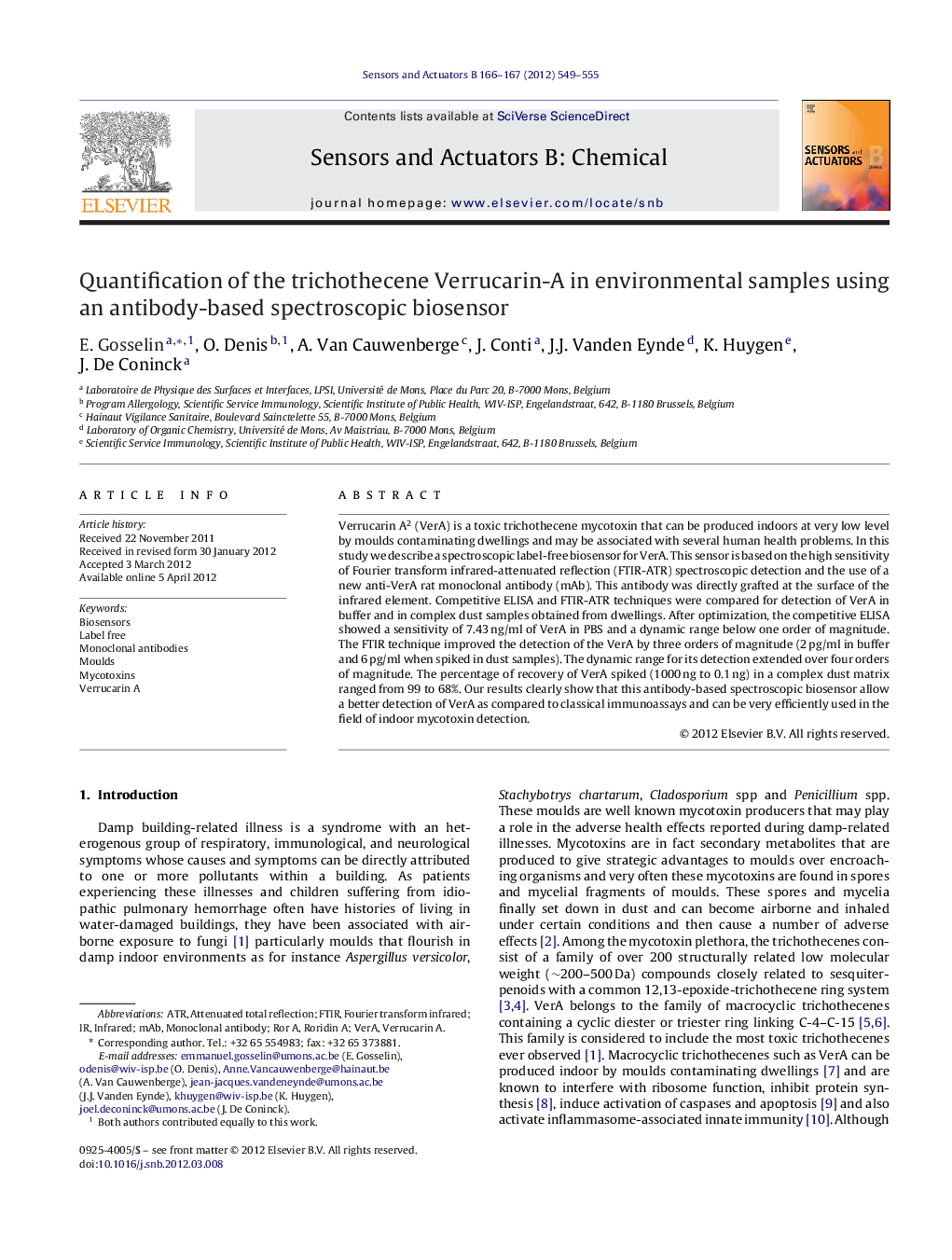| Article ID | Journal | Published Year | Pages | File Type |
|---|---|---|---|---|
| 742613 | Sensors and Actuators B: Chemical | 2012 | 7 Pages |
Verrucarin A2 (VerA) is a toxic trichothecene mycotoxin that can be produced indoors at very low level by moulds contaminating dwellings and may be associated with several human health problems. In this study we describe a spectroscopic label-free biosensor for VerA. This sensor is based on the high sensitivity of Fourier transform infrared-attenuated reflection (FTIR-ATR) spectroscopic detection and the use of a new anti-VerA rat monoclonal antibody (mAb). This antibody was directly grafted at the surface of the infrared element. Competitive ELISA and FTIR-ATR techniques were compared for detection of VerA in buffer and in complex dust samples obtained from dwellings. After optimization, the competitive ELISA showed a sensitivity of 7.43 ng/ml of VerA in PBS and a dynamic range below one order of magnitude. The FTIR technique improved the detection of the VerA by three orders of magnitude (2 pg/ml in buffer and 6 pg/ml when spiked in dust samples). The dynamic range for its detection extended over four orders of magnitude. The percentage of recovery of VerA spiked (1000 ng to 0.1 ng) in a complex dust matrix ranged from 99 to 68%. Our results clearly show that this antibody-based spectroscopic biosensor allow a better detection of VerA as compared to classical immunoassays and can be very efficiently used in the field of indoor mycotoxin detection.
